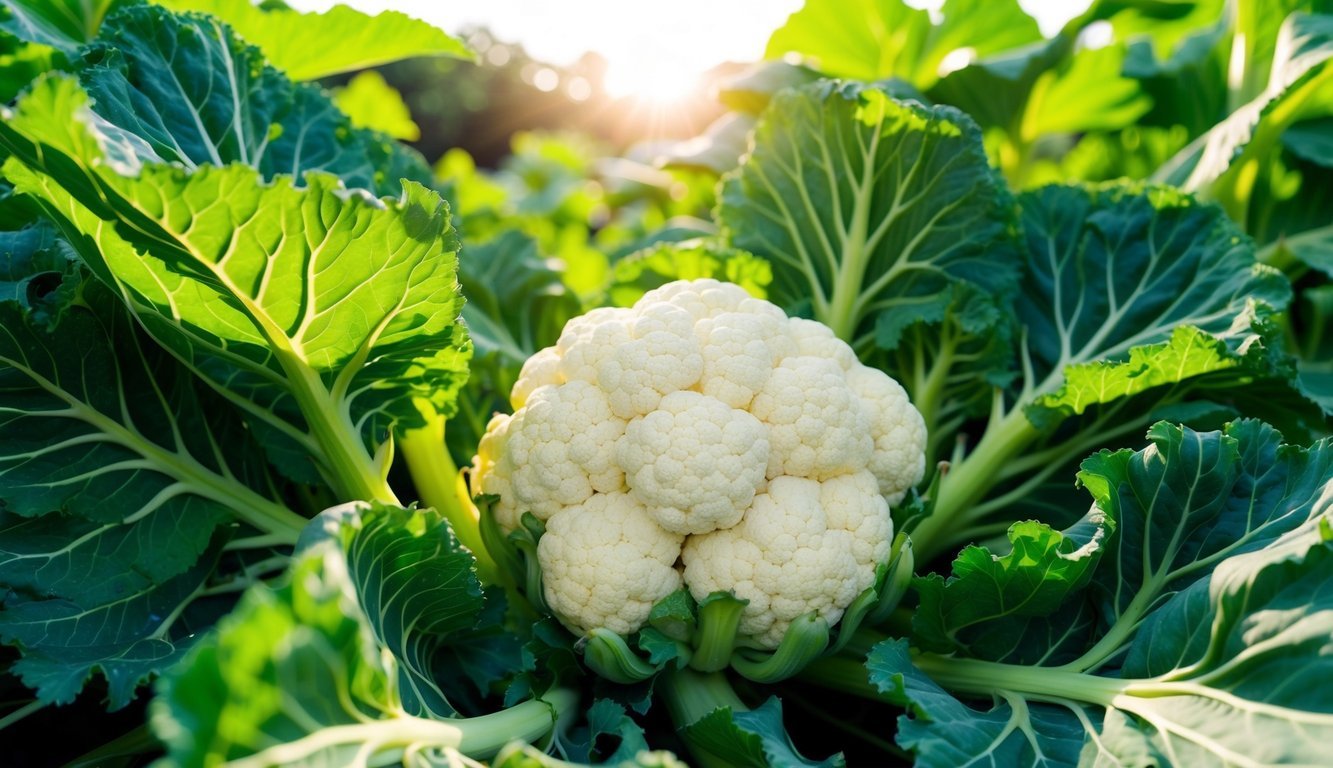
A Comprehensive Guide to Preventing Cauliflower Head Disorders
Cauliflower, known scientifically as Brassica oleracea var. botrytis, is a delicate vegetable that flourishes in cooler climates.
When not properly cared for, it can struggle to form the delicious, tender heads that gardeners and chefs alike cherish.
In this guide, we will cover nine common disorders that can affect the formation of cauliflower heads, outlining each condition’s definition, characteristics, causes, and preventive measures.
Nine Disorders Impacting Cauliflower Heads
- Blindness
- Characteristics: The plant showcases lush foliage but completely lacks any head development at its center.
- Causes: Factors such as genetic predispositions, damage to the growing point, and significant temperature variations can contribute.
- Prevention: Select high-quality seeds, employ floating row covers for protection, and plant according to the recommended schedules for your USDA Hardiness Zone.
- Bolting
- Characteristics: A central stalk emerges, leading to flower development instead of forming a proper head.
- Causes: Sudden temperature shifts and early transplanting can trigger bolting.
- Prevention: Use seeds suited for your climate, start them indoors, and protect the plants during extreme weather episodes.
- Browning
- Characteristics: The florets may display brown, red, or yellow hues.
- Causes: Nutrient deficiencies, particularly boron, excessive sunlight, or pest damage can be underlying factors.
- Prevention: Conduct soil tests to evaluate nutrient levels, opt for self-blanching varieties, and implement reliable pest control measures.
- Buttoning
- Characteristics: Instead of forming a cohesive head, the plant produces small, separate knobs.
- Causes: Nutrient deficiencies, improper hardening off, or inconsistent watering practices can lead to this issue.
- Prevention: Test the soil, transplant at the correct times, and ensure consistent moisture levels for optimal growth.
- Head Splitting
- Characteristics: Florets separate, indicating that the plant is under stress.
- Causes: Excess moisture or delays in harvesting often contribute to this problem.
- Prevention: Water accordingly and harvest the heads in a timely manner to avoid splitting.
- Leaf Tip Burn
- Characteristics: The inner leaves’ edges turn brown.
- Causes: A lack of calcium, extreme temperature variations, or excess nitrogen can be contributing factors.
- Prevention: Test soil for nutrients, use shade cloth during especially hot days, and ensure adequate moisture levels.
- Leafy Curds
- Characteristics: Florets become loose, with leaves intermingled among them.
- Causes: High temperatures or delays in harvesting often lead to this issue.
- Prevention: Utilize shade cloth to regulate temperature and adhere to recommended harvesting timelines.
- Ricing
- Characteristics: Curds may appear grainy or moldy.
- Causes: High humidity levels or excessive nitrogen can cause this condition.
- Prevention: Promote sufficient spacing for air circulation, manage moisture levels carefully, and select suitable cultivars.
- Whiptail
- Characteristics: Leaves show yellowing and poorly formed veins.
- Causes: A deficiency in molybdenum coupled with high soil acidity is typically responsible.
- Prevention: Regularly test your soil’s pH and make necessary adjustments to correct any imbalances.
Emphasizing Prevention
Given the fragility associated with growing cauliflower, recognizing the triggers of these head disorders is crucial for a bountiful harvest.
By proactively implementing a variety of preventive strategies, you increase your chances of yielding healthy, robust cauliflower heads that will please any palate.
Source: Gardenerspath

